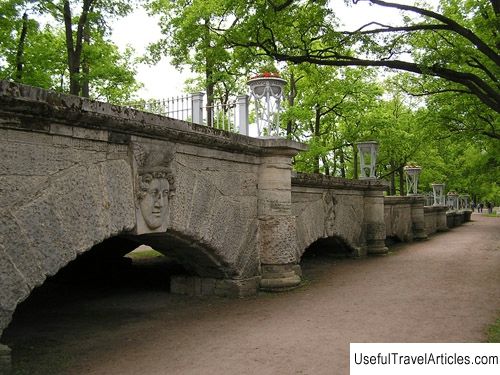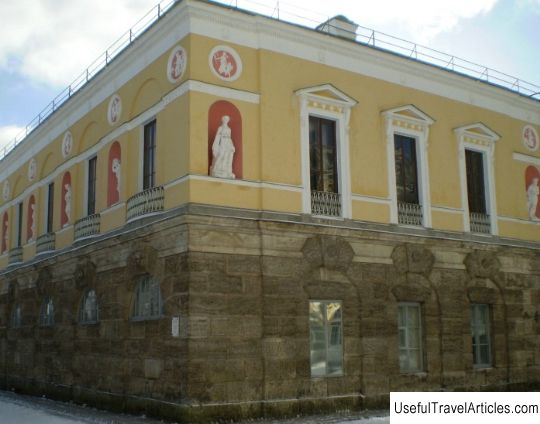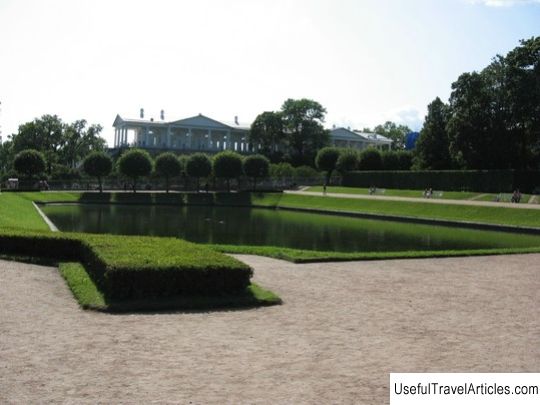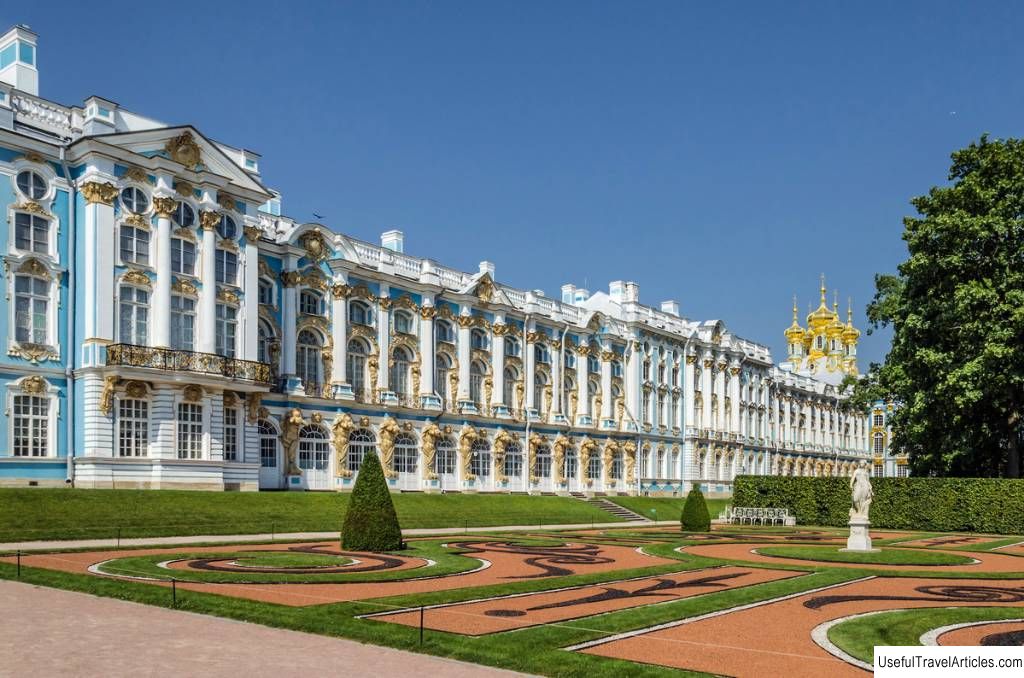Agate rooms description and photos - Russia - St. Petersburg: Pushkin (Tsarskoe Selo)
Rating: 8,2/10 (2433 votes) 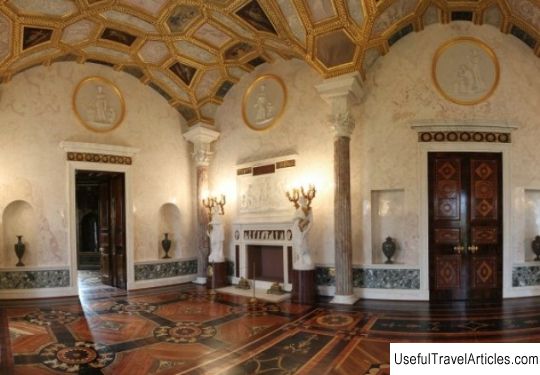
Agate rooms description and photos - Russia - St. Petersburg: Pushkin (Tsarskoe Selo). Detailed information about the attraction. Description, photos and a map showing the nearest significant objects. Photo and descriptionThe Hanging Garden of the architectural complex of the sculptor Charles Cameron connects the terrace of the Cameron Gallery with the Agate Rooms, in which Empress Catherine II the Great was studying state documents early in the morning and responding to letters. The entrance to the Agate Rooms is made in the form of an oval semi-rotunda. The walls of the pavilion are light yellow, set off by the brick-red hue of embossed medallions and semicircular niches in which decorative statues and busts of dark bronze are located. Three oak doors are introduced into the premises of the Agate Rooms: the door to the right leads to the Library and to the stairs to the 1st floor, to the left - to the hall, which is called the Cabinet; the middle door leads to the Great Hall. Most of the Agate rooms are occupied by the Great Hall and two offices, located on the sides. Charles Cameron made the main emphasis on the decoration of the ceremonial halls of the Agate Rooms: the pavilion's interiors are faced with marble, colored Altai and Ural jasper, the processing of which in our country reached perfection in the 18th century. Back in the 16th century, deposits of hard colored stones were found in the Urals, but at that time the methods of their processing were still unknown. Emperor Peter the Great showed great interest in the use of "colored stones" in the design of palace interiors. It was he who laid the foundations for the flourishing of stone-cutting art in Russia. In 1752, by his decree, in the suburb of St. Petersburg - Peterhof, the first cutting factory in our country was opened, where they began to produce products from colored stones, and organized training for masters in stone cutting. In the 1750s, a passion for mineralogy was widespread among Russian aristocrats. In 1765, at the behest of Empress Catherine II the Great, an expedition led by J. Dannenberg was sent to the Urals, which discovered new deposits of agates, jasper, carnelian and other minerals. By the beginning of the 1780s, a technology for making products from solid gems had been created at Russian cutting factories: old dreams of decorating palace premises with natural colored stones became real. In 1783, the architect Cameron received an order from Empress Catherine II to develop a plan for decorating the Agate rooms with jasper. The architect fulfilled the will of the empress and created drawings for a new project of decorating two offices with jasper. In accordance with the idea of Charles Cameron, the walls of the offices were reduced by 9 centimeters and covered with limestone slabs trimmed with jasper. The main obstacle was the final work, which is grinding and polishing the colored stone, designed to demonstrate the brightness of the colors and the richness of tones. When polishing, it was necessary to bring about 200 square meters of walls, cornices and platbands to a glass sheen. Russian craftsmen carried out this work by hand. The walls of two rooms of the Agate Rooms were decorated with dark red Urazian jasper plates with the addition of white quartzite. In the 18th century this jasper was called “meat agate”, which is why the interiors were called Agate rooms. During the Great Patriotic War, the fascist invaders did not regret the jasper cladding, artificial marble walls of the Agate Rooms. In all the rooms, bronze ornaments were damaged; 6 jasper vases, marble sculpture, 9 bronze sculptural ensembles from the walls of the Jasper Study, bronze medallions from the Great Hall have disappeared without a trace. Despite this, the decoration of the Agate Rooms, in general, has been preserved from the 18th century. The Agate Rooms are currently open to visitors.    Topic: Agate rooms description and photos - Russia - St. Petersburg: Pushkin (Tsarskoe Selo). |
